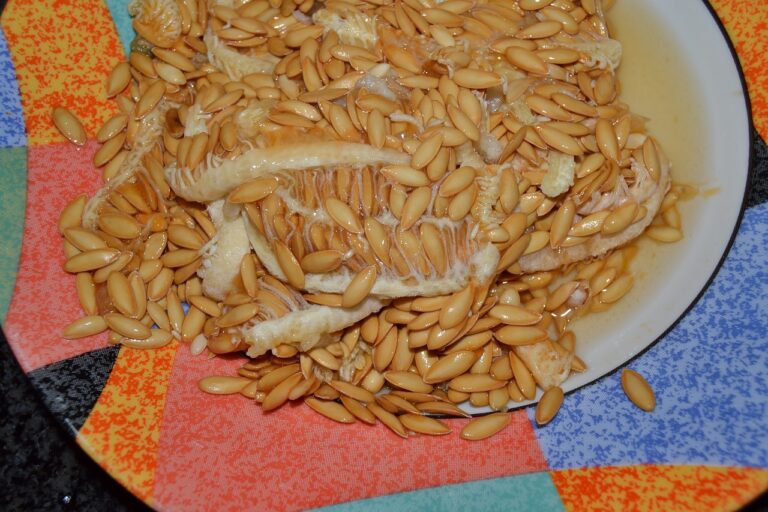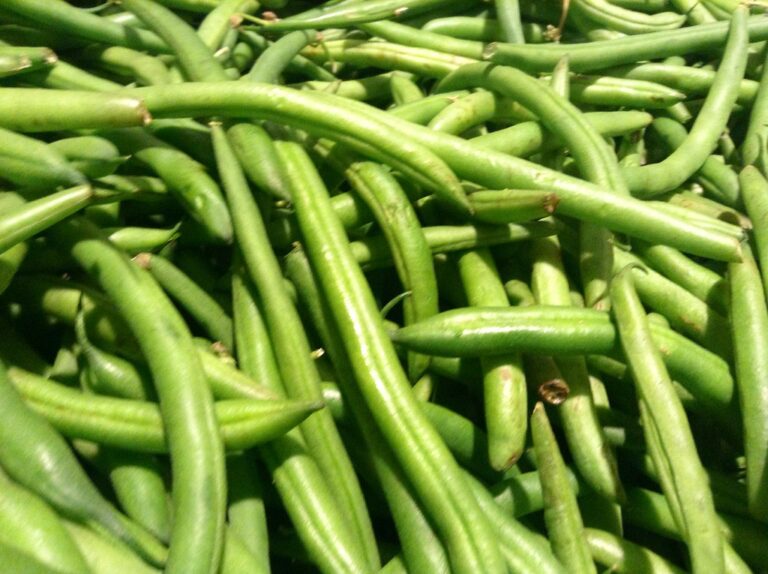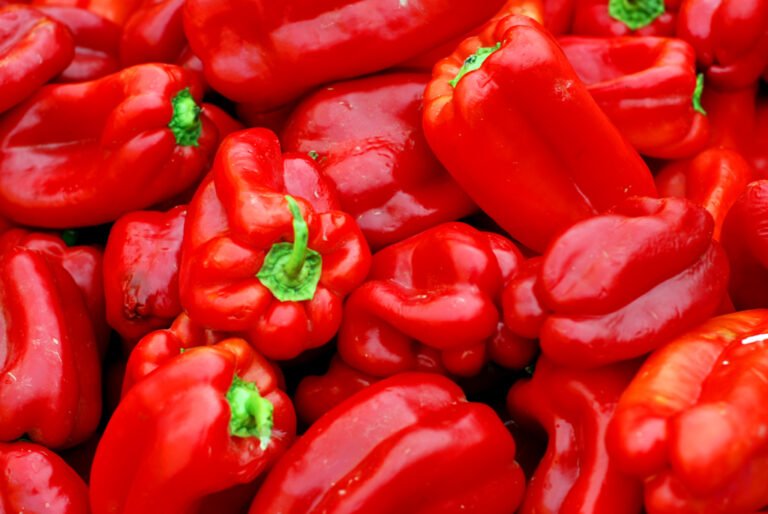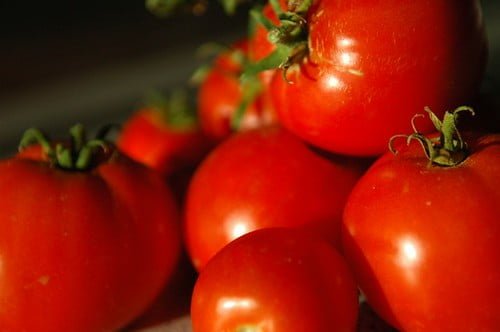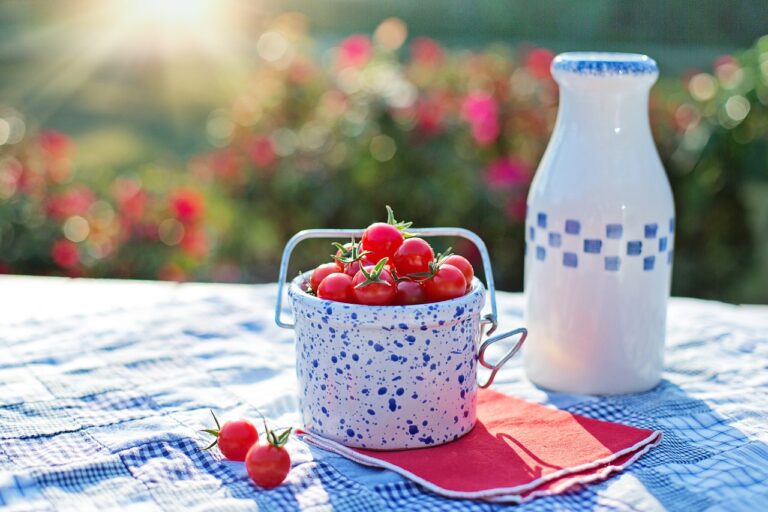A Comprehensive Guide to Container Vegetable Gardening: Choosing the Right Pots and Soil
Looking to start your own container vegetable garden? This comprehensive guide has all the information you need to get started. Learn how to choose the right pots and soil for your plants, and discover the benefits of container gardening. Find out what factors to consider when selecting pot sizes, and understand the importance of proper drainage and watering techniques. With this practical guide, you'll have all the tools you need to succeed in growing your own vegetables in containers.
Benefits of Container Gardening
If you're considering starting a container vegetable garden, you'll be pleased to learn about the numerous benefits that come with this gardening method. One of the biggest advantages of container gardening is its flexibility. With containers, you have the freedom to move your plants around, allowing you to optimize their exposure to sunlight and protect them from extreme weather conditions. Additionally, container gardening requires less space compared to traditional gardening, making it ideal for those with limited yard space or urban dwellers with only a balcony or patio. Another benefit is the ability to control the soil quality and composition, ensuring optimal growth for your vegetables. However, it's important to note that container gardening also has its disadvantages. Containers can dry out quickly, requiring frequent watering, and some plants may have limited root space, affecting their overall growth. Nevertheless, with proper care and attention, container gardening can provide a bountiful harvest in a compact and manageable way.
Types of Containers for Vegetables
Now let's explore the different types of containers you can use for growing vegetables in your container garden. When it comes to container materials, there are several options to choose from. Clay pots are popular for their natural appearance and ability to regulate moisture levels. However, they can be heavy and may break easily. Plastic containers are lightweight, inexpensive, and come in a variety of sizes and colors. They also retain moisture well, but may deteriorate over time. Fabric containers are a great choice for those looking to promote healthy root growth, as they allow for better aeration and drainage. Another option is vertical gardening, which involves using wall-mounted containers or hanging baskets to maximize space. This method is particularly useful for small gardens or balconies with limited floor space. Choose the container material and style that best suits your needs and available space.
Considerations for Choosing the Right Pot Size
When selecting the right pot size for your container vegetable garden, consider the space requirements of the plants you intend to grow. Different plants have different space needs, so it's important to choose a pot that allows for adequate root growth and development. The pot material is also an important consideration. Clay pots are porous and can dry out quickly, so they are best for plants that prefer drier conditions. Plastic pots, on the other hand, retain moisture well and are a good choice for plants that require more water. In addition to pot size and material, you should also consider the sunlight requirements of your plants. Some vegetables thrive in full sun, while others prefer partial shade. By choosing pots that meet the space and sunlight needs of your plants, you can create an optimal growing environment for your container vegetable garden.
Selecting the Ideal Soil for Container Gardening
To create a successful container vegetable garden, you need to select the ideal soil for your plants. The soil composition plays a crucial role in providing the necessary nutrients and support for your plants' growth. When choosing soil for container gardening, opt for a high-quality potting mix specifically formulated for container plants. These mixes are typically lightweight, well-draining, and rich in organic matter. They provide an ideal balance of water retention and aeration, preventing waterlogged roots and allowing for healthy plant development. Additionally, consider the pH levels of the soil. Most vegetables prefer a slightly acidic to neutral pH range of 6.0 to 7.0. Testing the soil's pH and adjusting it, if necessary, will help ensure optimal nutrient uptake and overall plant health. Remember, choosing the right soil is the foundation for a thriving container vegetable garden.
Understanding the Importance of Drainage
Ensuring proper drainage is essential for the success of your container vegetable garden. Adequate drainage allows excess water to escape, preventing waterlogging and avoiding damage to your plants' roots. To achieve effective drainage, you can employ several techniques. Firstly, choose pots with drainage holes at the bottom to allow water to flow out freely. If your pots don't have drainage holes, you can add a layer of rocks or broken pottery at the bottom to create a reservoir for excess water. Secondly, use a well-draining potting mix that is specifically formulated for containers. This type of soil allows water to pass through easily while retaining enough moisture for the plants. Lastly, consider using a saucer or tray underneath your pots to catch excess water, preventing it from pooling around the roots. By implementing these drainage techniques, you can ensure that your container vegetable garden thrives.
Fertilizing Techniques for Container Vegetables
To ensure the health and productivity of your container vegetable garden, it is important to properly fertilize your plants. Fertilizer application is essential for providing the necessary nutrients that your plants need to thrive. When choosing a fertilizer for your container vegetables, opt for organic fertilizers. Organic fertilizers, such as compost, fish emulsion, and seaweed extract, are derived from natural sources and are environmentally friendly. They provide a slow release of nutrients, ensuring a steady supply for your plants. Before applying the fertilizer, make sure to read and follow the instructions on the package. Apply the fertilizer evenly around the base of your plants, being careful not to overdo it. Remember to water your plants after fertilizing to help the nutrients penetrate the soil and reach the roots. Regular fertilization will help your container vegetables grow strong and healthy, resulting in bountiful harvests.
Watering Tips for Healthy Container Plants
For healthy container plants, it is crucial to water them properly, ensuring that they receive the right amount of moisture for optimal growth. Watering frequency is essential, as containers tend to dry out more quickly than plants in the ground. As a general rule, check the moisture level of the potting soil daily by sticking your finger about an inch deep into the soil. If it feels dry at that depth, it's time to water. However, be cautious not to overwater. Signs of overwatering include yellowing leaves, root rot, and a foul smell. To prevent overwatering, ensure that your pots have drainage holes and use a well-draining potting mix. Remember, consistent watering and careful monitoring are key to maintaining healthy container plants.
Essential Tools for Container Gardening Success
To achieve success in container gardening, you'll need a few essential tools. These tools will make your gardening experience more efficient and enjoyable. First, you'll need a good pair of gardening gloves to protect your hands from dirt and thorns. Next, invest in a quality trowel for digging and transplanting plants. A hand pruner is also essential for trimming and shaping your plants. Additionally, a watering can with a long spout will help you reach every corner of your containers. To ensure healthy soil, a soil pH tester and a soil moisture meter are indispensable tools. Lastly, a small garden shovel and a rake will come in handy for preparing your containers and maintaining them. By equipping yourself with these tools for container gardening, you'll be well-prepared to tackle various container gardening techniques.
Choosing the Best Vegetables for Container Gardening
As you continue exploring container gardening, consider the best vegetables to grow in your containers based on their size and growth habits. Not all vegetables thrive in containers, so it's important to choose ones that are well-suited for this type of gardening. Some of the best vegetables for container gardening include tomatoes, peppers, lettuce, spinach, radishes, carrots, and herbs like basil and parsley. These vegetables have compact growth habits and can be grown successfully in smaller spaces. Additionally, consider the size of your containers and choose vegetables that will fit comfortably without overcrowding. When selecting your vegetables, keep in mind their sunlight and watering requirements, as well as the container gardening techniques you'll be using. By choosing the right vegetables for your containers, you'll be on your way to a successful and bountiful harvest.
Troubleshooting Common Container Gardening Problems
If you encounter any challenges while container gardening, troubleshooting is essential to resolve common problems. When it comes to pests, they can be a real nuisance in your container garden. One effective way to troubleshoot this issue is by using natural pest control methods such as companion planting or introducing beneficial insects like ladybugs or praying mantises. These natural predators can help keep pests in check without the need for harmful chemicals. Another common problem in container gardening is overwatering. To deal with this, make sure your pots have proper drainage holes and use a well-draining potting mix. Additionally, always check the moisture level of the soil before watering and adjust accordingly. Remember, by troubleshooting these common issues, you can ensure a healthy and thriving container garden.
Frequently Asked Questions
Can I Use Any Type of Soil for Container Vegetable Gardening?
You can use different soil types for container vegetable gardening, but it's important to choose a well-draining mix that provides nutrients. Follow these container gardening tips to ensure your plants thrive.
How Often Should I Fertilize My Container Vegetables?
To ensure healthy container vegetables, fertilize every two to four weeks, starting two weeks after planting. Signs of nutrient deficiency, such as yellowing leaves or stunted growth, may indicate the need for more frequent fertilization.
What Are Some Common Mistakes to Avoid When Watering Container Plants?
When watering container plants, common mistakes to avoid include overwatering, not checking soil moisture levels, and using improper watering techniques. It's important to water consistently and evenly, allowing excess water to drain properly.
Are There Any Specific Tools or Equipment That Are Essential for Container Gardening Success?
To have success in container gardening, you'll need some essential tools like a trowel and pruners. When choosing pots, consider drainage and size. Remember, the right tools and containers can make a big difference in your gardening experience.
What Are Some Common Pests or Diseases That Affect Container Vegetable Plants, and How Can I Prevent or Treat Them?
To prevent pests and diseases in your container vegetable garden, it's important to be proactive. Regularly inspect your plants for signs of trouble, use organic pest control methods, and consider companion planting to deter pests naturally.
Conclusion
In conclusion, container vegetable gardening is a practical and convenient way to enjoy fresh produce at home. By choosing the right pots and soil, considering pot size, ensuring proper drainage, and using essential tools, you can create a successful container garden. Additionally, selecting the best vegetables for container gardening and following watering tips will help you troubleshoot common problems. With these tips, you'll be on your way to a thriving and rewarding container garden. Happy gardening!

